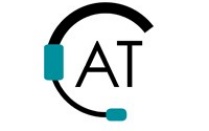SPICE (Simulation Program with Integrated Circuit Emphasis)
Competency Group: Electrical Engineering
Type: Software Simulation Tool
Description: Integrated circuits, unlike board-level designs composed of discrete parts, are impossible to breadboard before manufacture. Further, the high costs of photolithographic masks and other manufacturing prerequisites make it essential to design the circuit to be as close to perfect as possible before the integrated circuit is first built. Simulating the circuit with SPICE is the industry-standard way to verify circuit operation at the transistor level before committing to manufacturing an integrated circuit. For example, it will draw out circuits and simulate what happens when the circuits are powered up/ and behave under different emergency conditions.
Citation for Description: SPICE. (2012). Retrieved from Wikipedia, http://en.wikipedia.org/w/index.php?title=SPICE&oldid=470984230
Units: Circuit Behavioral information such as Voltage and current waveforms showing things such as timing and loading behavior.
Advantages: Is relatively cheap, is generally regarded as an industry standard which is taught in most Electrical/Electronic university courses.
Limitations: Dependent on complexity, the simulation parameters and circuit arrangement, can be very complicated and require a lot of time to implement.
Regulations: IEEE Standards Association. (2012). 1516-2010 — IEEE Standard for Modeling and Simulation (M&S) High Level Architecture (HLA) — Framework and Rules. Retrieved from http://standards.ieee.org/findstds/standard/1516-2010.html
Target Audience: Engineering
Relevant to Universal Design: No
Stages and Steps: 3.5, 5, 6
Free Resource: Cadence. (2012). PSPICE 9.1 student version. Retrieved from http://www.electronics-lab.com/downloads/schematic/013/
Free Resource: Sturtevant, T. (2006). Pspice Tutorial. Retrieved from http://denethor.wlu.ca/PSpice/pspice_tutorial.html
